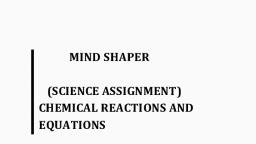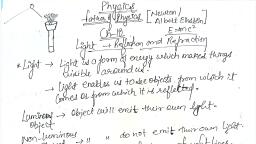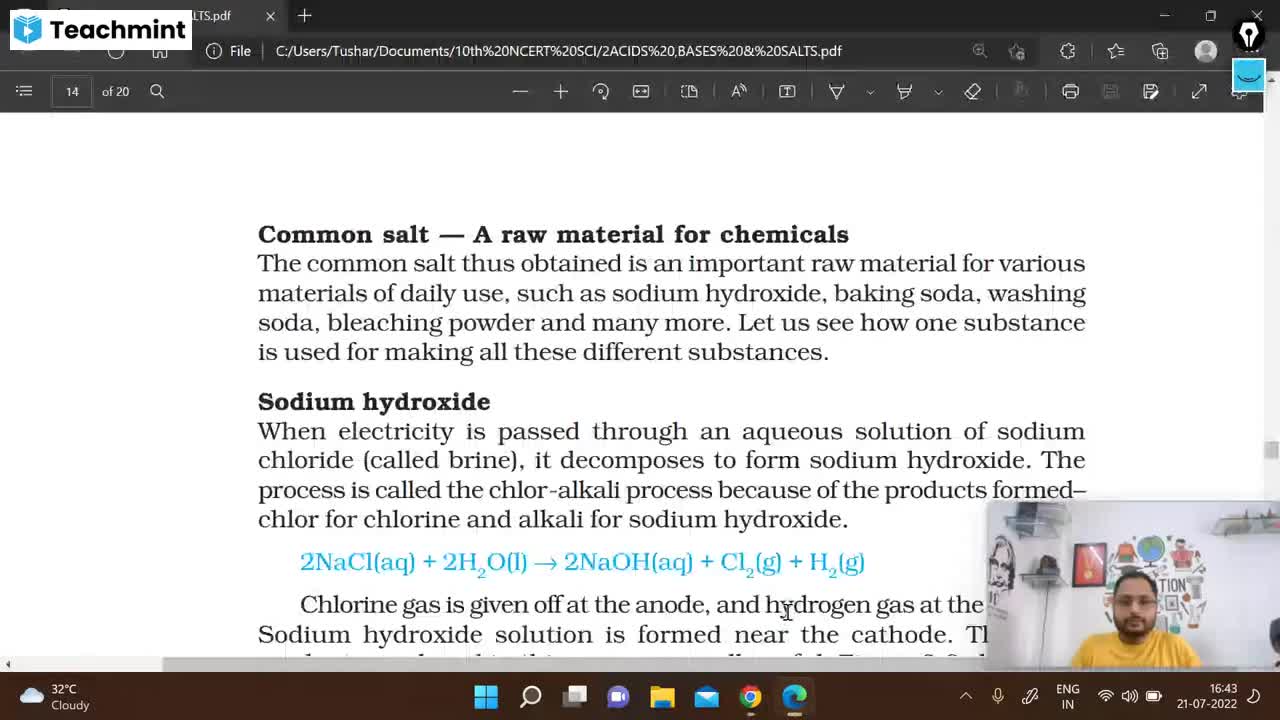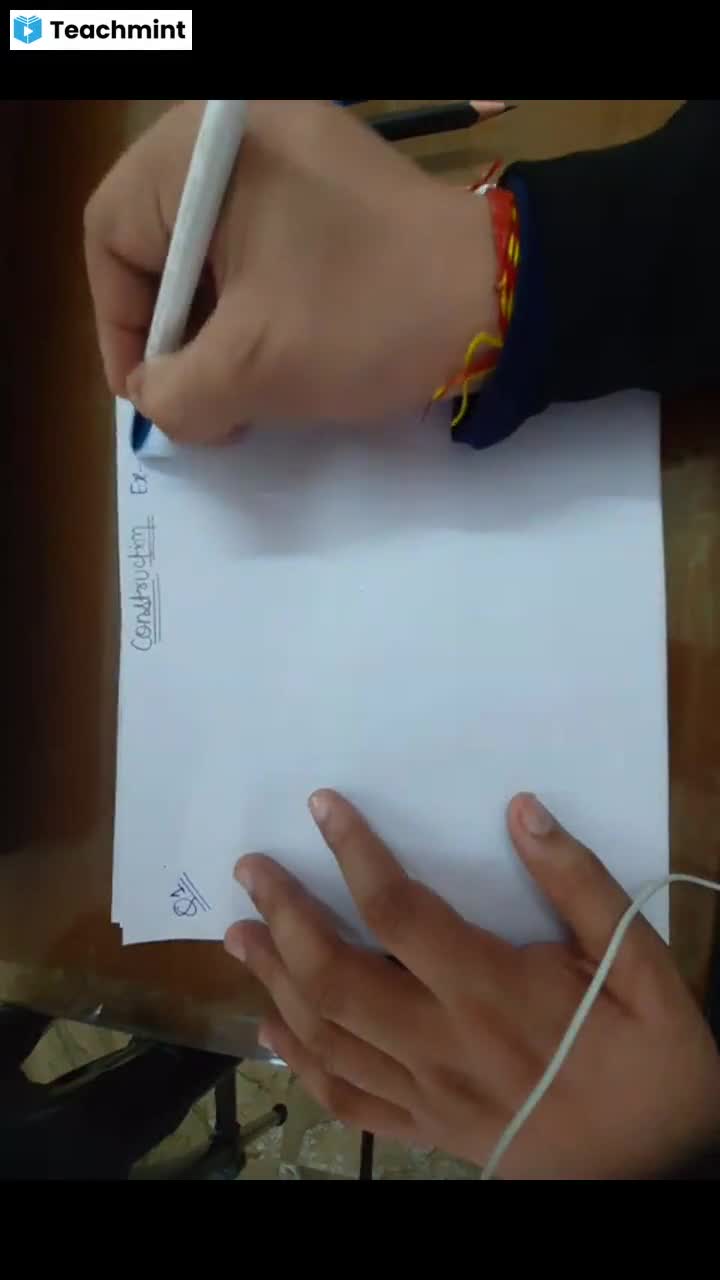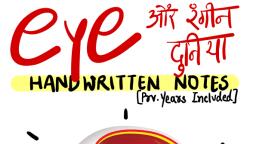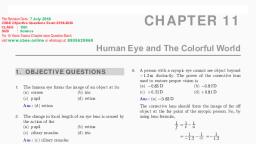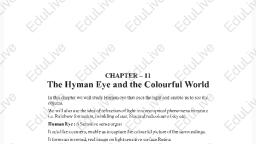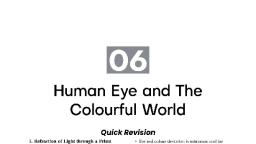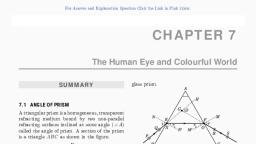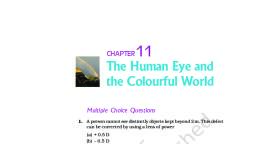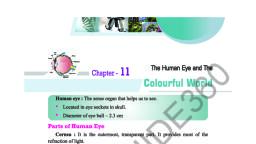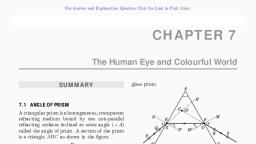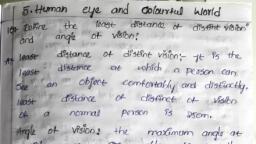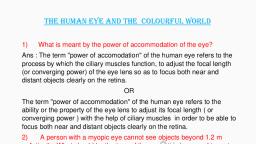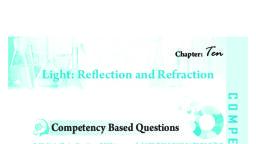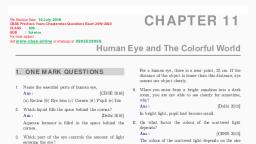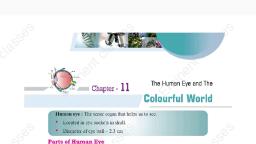Page 1 :
Answer the following questions:, 1. What is a diameter of human eye?, 2. What is the function of crystalline lens of human eye?, 3. In which type of eye defect far point of the eye gets reduced?, 4. Why do birds fly back to their nest in the evening?, 5. Why do you take time to find object when you enter in dim lighted room from outside in the sun?, 6. Why does ray of light splits when passed from prism?, 7. Why doesn’t planet appear to be twinkling?, 8. Why we can’t see things very close to our eyes?, 9. When we see any object through the hot air over the fire, it appears to be wavy, moving slightly. Explain., 10. Why does sky appear blue on a clear day?, Tick the correct option:, 1. The image formed by retina of human eye is, a. Virtual and erect, b. Real and inverted, c. Virtual and inverted, d. Real and erect, 2. The change in the focal length of human eye is caused due to, a. Ciliary muscles, b. Pupil, c. Cornea, d. Iris, 3. The least distance of distinct vision for a young adult with normal vision is, a. 25 m, b. 20 m, c. 25 cm, d. 20 cm, 4. The persistence of vision for human eye is, a. 1/10th of a second, b. 1/16th of a second, c. 1/6th of the second, d. 1/18th of a second, 5. The light sensitive cell present on retina and is sensitive to the intensity of light is:, a. Cones, b. Rods, c. Both rods and cones, d. None of these, 6. The phenomena of light responsible for the working of the human eye is, a. Reflection, b. Refraction, c. Power of accommodation, d. Persistence of vision, 7. Which of the following colors is least scattered by fog, dust of smoke?, a. Violet, b. Blue, c. Red, d. Yellow, 8. The colored light that refracts most while passing through a prism is, a. Yellow, b. Violet, c. Blue, d. Red, 9. The amount of light entering the human eye is controlled by, a. Ciliary muscles, b. Pupil, c. Cornea, d. Iris, 10. The part of the eyes refracts light entering the eye from external objects?, a. Lens, b. Cornea, c. Iris, d. Pupil, Previous year questions:, 1. What eye defect is hypermetropia? Describe with a ray diagram how this defect of vision can be corrected by using an appropriate lens. (CBSE 2011), 2. A star sometimes appears brighter and some other times fainter. What is this effect called?, State the reason for this effect. (CBSE 2012), 3. A student cannot see a chart hanging on a wall placed at a distance of 3 m from him. Name the defect of vision he is suffering from. How can it be corrected? (CBSE 2012), Draw ray diagrams for the (i) defect of vision and also (ii) for its correction, 4. Why is red color selected for danger signal lights? (CBSE 2008), 5. (a) A person cannot read newspaper placed nearer than 50 cm from his eyes. Name the defect of vision he is suffering from. Draw a ray diagram to illustrate this defect. List its two possible causes. Draw a ray diagram to show how this defect may be corrected using a lens of appropriate focal length., (b) We see advertisements for eye donation on television or in newspapers. Write the importance of such advertisement. (CBSE 2013), 6. Explain giving reason why the sky appears blue to an observer from the surface of the earth? What will the color of the sky be for an astronaut staying in the international space station orbiting the earth? Justify your answer giving reason. (CBSE 2013), 7. (a) List three common refractive defects of vision. Suggest the way of correcting these defects., (b) About 45 lac people in the developing countries are suffering from corneal blindness. About 30 lac children below the age of 12 years suffering from this defect can be cured by replacing the defective cornea with the cornea of a donated eye. How and why can students of your age involve themselves to create awareness about this fact among people? (CBSE 2014), 8. With the help of a labeled diagram, explain why the sun appears reddish at the sun-rise and the sunset. (CBSE 2015), 9. (a) What is dispersion of white light? What is the cause of this dispersion? Draw a diagram to show the dispersion of white light by a glass prism., (b) a glass prism is able to produce a spectrum when white light passes through it but a glass slab does not produce any spectrum. Explain why? (AI CBSE 2008), Following questions consist of two statements – Assertion (A) and Reason (R). Answer these questions selecting the appropriate option given below:, (a) Both A and R are true and R is the correct explanation of A., (b) Both A and R are true but R is not the correct explanation of A., (c) A is true but R is false., (d) A is false but R is true., Q.1. Assertion(A) : White light is dispersed into its seven-colour components by a prism., Reason (R) : Different colours of light bend through different angles with respect to the incident ray as they pass through a prism., Q.2. Assertion(A) : The phenomenon of scattering of light by the colloidal particles gives rise to Tyndall effect., Reason (R): The colour of the scattered light depends on the size of the scattering particles., Q.3. Assertion(A): A normal human eye can clearly see all the objects beyond certain minimum distance., Reason (R) : The human eye has capacity of adjusting the focal length of eye lens., Q.4. Assertion(A) : A rainbow is sometimes seen in the sky in rainy season only when observer’s back is towards the Sun., Reason (R) : Internal reflection in the water droplets cause dispersion and the final rays are in backward direction., Q.5. Assertion (A) : Myopia is the defect of the eye in which only nearer objects are seen by the eye., Reason (R) : The eye ball is elongated., Q.6. Assertion(A): Hypermetropia is the defect of the eye in which only farther objects are seen., Reason (R) : Hypermetropia is corrected by using converging lens., Q.7. Assertion(A) : Danger signals are made of red colour., Reason (R) : Velocity of red light in air is maximum, so signals are visible even in dark., Q.8. Assertion(A): The sky looks dark and black instead of blue in outer space., Reason (R) : No atmosphere containing air in the outer space to scatter sunlight., Q.9. Assertion (A): The stars twinkle, while the planets do not., Reason (R) : The stars are much bigger in size than the planets., Q.10. Assertion(A): The Sun appears flattened at sunrise and sunset., Reason (R) : The apparent flattering of the Sun’s disc at sunrise and sunset is due to atmospheric refraction., Q.11. Assertion (A) : Blue colour of sky appears due to scattering of blue colour., Reason (R) : Blue light has longer wavelength.

